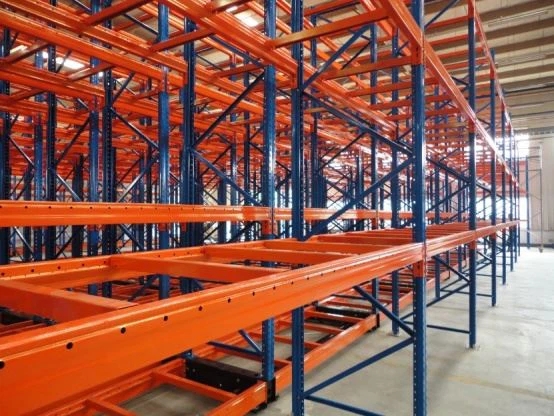Preventing accidents on storage shelves is crucial for the safety of employees, customers, and the protection of inventory. Here are some important steps to minimize the risk of accidents:
Proper Installation:
Ensure that storage shelves are correctly installed, following the manufacturer's instructions and safety guidelines. Secure them to the floor or wall as needed to prevent tipping.
Weight Capacity:
Adhere to the weight capacity limits specified by the manufacturer. Overloading shelves can lead to structural failure and accidents.
Regular Inspections:
Conduct regular inspections of the storage shelves to identify any signs of damage, wear, or instability. Address any issues promptly and, if necessary, take damaged shelving units out of service.
Organization and Labeling:
Maintain an organized and well-labeled storage system. Clearly mark the contents of each shelf, ensuring that items are easily identifiable.
Safety Features:
Use safety features like anti-tip mechanisms, backstops, and rack guards to prevent items from falling off the shelves.
Proper Loading:
Distribute the weight evenly on each shelf, placing heavier items at the bottom and lighter items at the top. Avoid overloading any one shelf or section.

Training:
Train employees on safe shelving practices, including proper loading, unloading, and how to handle items safely. Ensure they understand weight capacity limits.
Use Suitable Equipment:
Use appropriate equipment like ladders or step stools when accessing items on high shelves. Avoid standing on the shelves or using makeshift solutions.
Aisle Clearance:
Maintain wide, unobstructed aisles between shelving units to ensure safe access and prevent collisions.
Stacking:
Stack items securely and neatly on the shelves. Use bins, dividers, or containers to help keep small items organized.
Material Handling Equipment:
Train employees on the proper use of forklifts, pallet jacks, or other material handling equipment when moving items on or off shelves.
Emergency Procedures:
Establish and communicate emergency procedures for shelving accidents or collapses. Employees should know how to respond in case of an emergency.
Regular Maintenance:
Keep shelves clean and well-maintained. Address any signs of corrosion, damage, or instability as soon as they are noticed.
Safety Training:
Provide safety training for all employees, including information about safe practices and potential hazards related to storage shelves.
Employee Awareness:
Encourage employees to report any issues, concerns, or damage they observe regarding storage shelves.
Emergency Response:
Ensure that first-aid supplies, fire extinguishers, and emergency exits are easily accessible in case of accidents.
Safety Culture:
Foster a safety culture within your organization where employees are encouraged to prioritize safety and report unsafe conditions.
Regular Audits:
Conduct regular safety audits of your storage areas to identify and address potential hazards.
Preventing accidents on storage shelves is an ongoing process that requires vigilance, training, and adherence to safety guidelines. By taking these steps and ensuring that all employees are aware of and follow safe practices, you can reduce the risk of accidents and create a safer work environment.
The above is the analysis of storage shelf manufacturers, if you have any questions and needs, you can contact us! We will provide you with satisfactory warehouse and storage solutions.